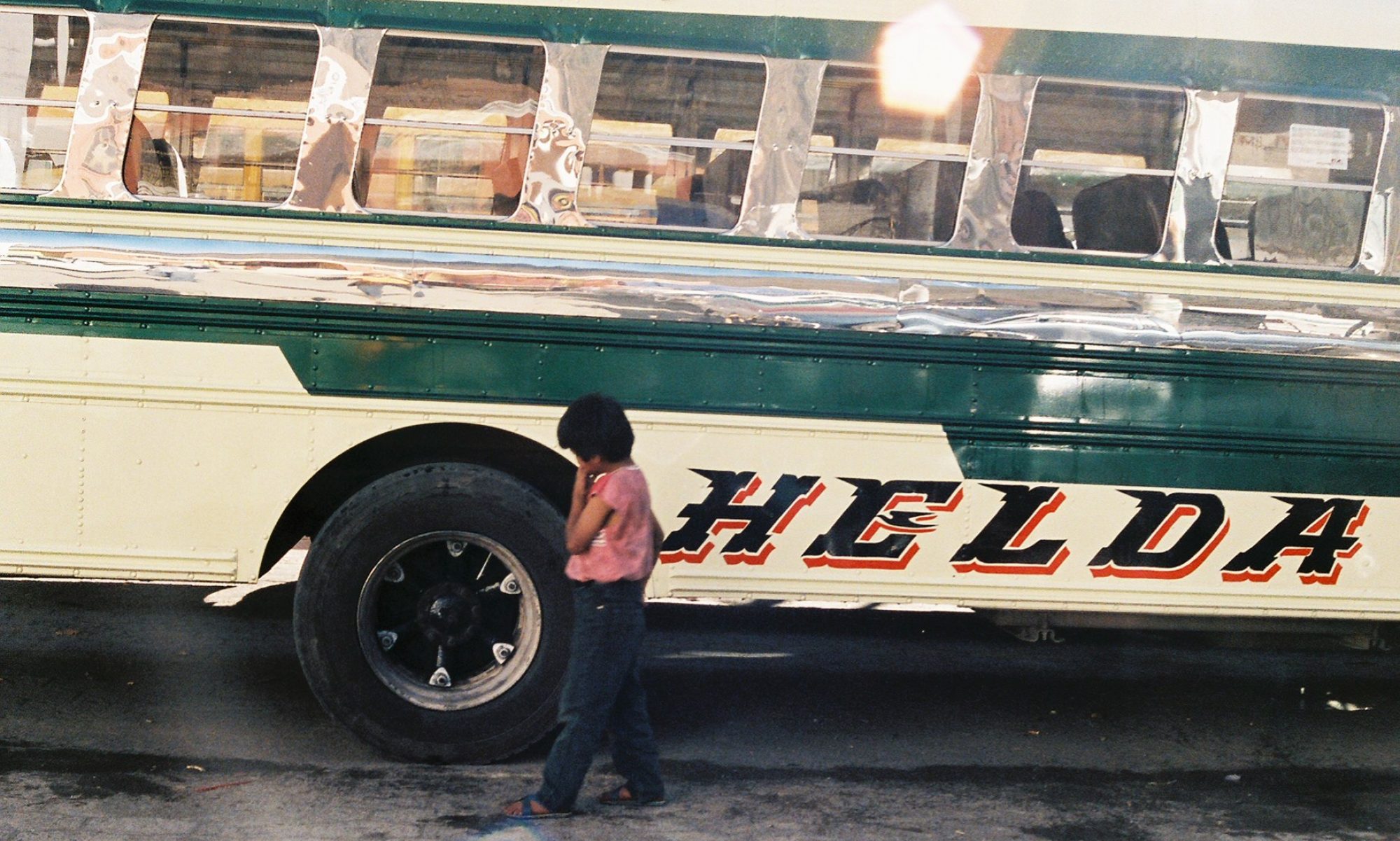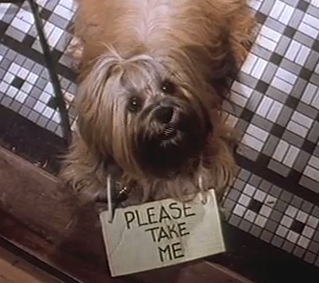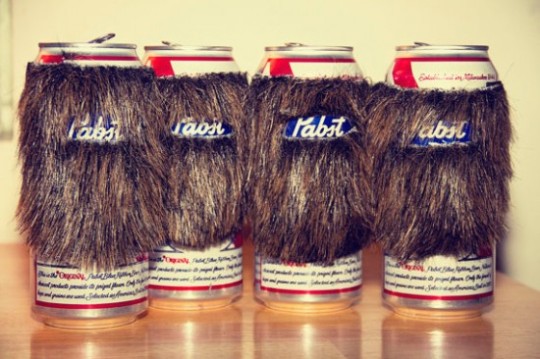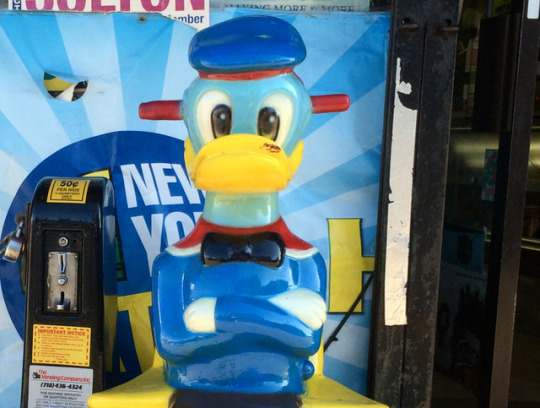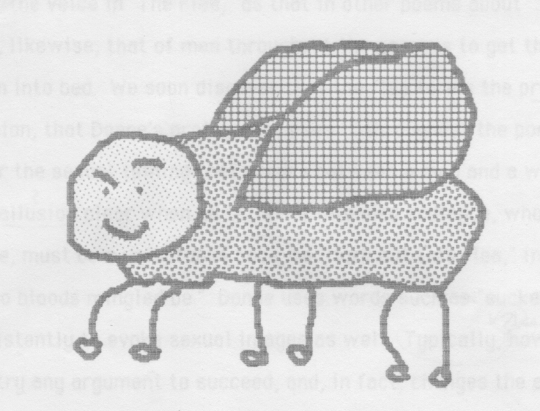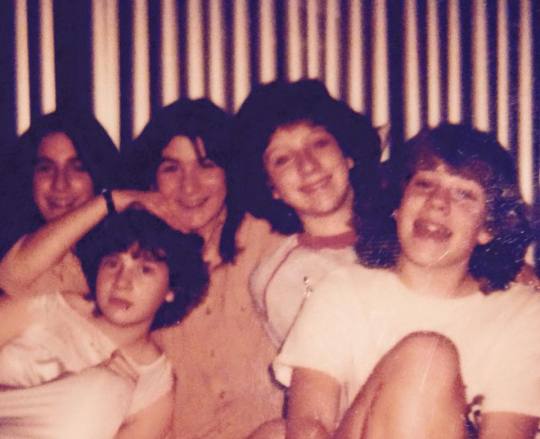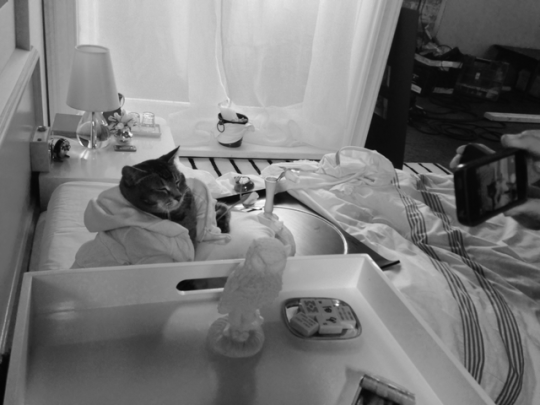
Back in August, 2005, Donald Trump was just a rich asshole with a bad toupee, a few bankruptcies to his name, and a horrible reality TV show. Nobody in a million years would have looked at the man and thought, “Now this guy’s presidential.”
Trump hasn’t changed much in the past decade, but I guess the world has, or at least a corner of it. Suddenly, a bully who doesn’t think before he speaks and isn’t used to ever being challenged or questioned, and lashes out when he is, is someone who some subset of America wants as its president (still, according to the latest poll numbers, despite the fact that he’s dropped out of the news cycle in recent weeks, thank you Pope Francis). So I thought maybe it was a good time to re-run this piece I wrote back then about working with him on a commercial. Like most of what I write, it ends up also being about working in film and my own insecurities, but at least, hey, I’m consistent! I guess The Donald isn’t the only one who hasn’t changed.
The Land of Trump
Worked with Donald Trump for the first time recently. He was pretty much what you’d expect: gentle, soft-spoken, with a fondness for butterflies…Ha ha, ha no, seriously, he’s the same guy you see on television. His tactic, I quickly observed (already familiar to those of you who watch The Apprentice), is to assert his opinion as often and as forcefully as possible.
“That was good, that was a really good take, I liked that one, let’s see that one back…Oh, that was the one, that’s the one you should use. You’re not going to get a better take than that one. The second one was pretty good too, maybe you could use the first half of the second one — Jenny (his personal stylist), you like that one?”
“Yes, Mr. Trump, but the second one was —”
“No, I like this one better. It doesn’t get any better than that.”
Note that he was mainly having a conversation with himself. The rest of us? Merely spectators. Because he already knows what he wants and that he’s right, at least in the Land of Trump. There’s a lot to be learned from this for those, like myself, who live in the Land of the Overly-Introspective Neurotic Peons, who are never 100% sure of anything except that we are eventually going to do something that gets us yelled at.
Unfortunately, The Donald arrived on set to do his thing in the last two hours of a workday that had begun, for the sound department, at 1 am (grip and electric had arrived at 10 pm, so they had less than no sympathy for us). By 7:30 in the morning when “the talent” got there, the sound guy and I were both fairly comatose.
We discussed our plan of action.
“I dunno, you want to mic him?”
“Mmm, not really. Do you want me to mic him?”
“No, no, I’ll do it…”
“Do you want me to go with you?”
"Okay, that’d be great.”
We stood outside Trump’s dressing room, listening to the friendly chit-chat coming from inside which still somehow, in that voice, sounded both authoritative and punitive. I noticed the sound guy was looking nervous.
“I’ll mic him if you want…”
“Yeah, um, I’m a little intimidated. Here.”
He pushed the wadded-up microphone into my hand and hurried away.
Contrary to what you might think when you sort through your positive memories of feeling people up, putting a radio mic on a person is no cheap thrill. First of all, any film production does not like to wait on sound. They’ll wait a millennium for camera and lighting to do their jobs if that’s what it takes, but nobody seems to remember that it needs to sound good as well as look good, nooo. Plus, we only get our turn after the talent has finished hair, make-up, and wardrobe, which is often precisely the moment when they’re getting called to set, and then suddenly you and your three minutes of miking time are holding up the whole enchilada – at which point the AD just has to call out over the walkie, “WAITING ON SOUND!” just to make sure everybody knows it.
Second, actors hate to be miked. And why shouldn’t they? It’s one more person they have to allow to poke and prod their way into their personal space, and then it’s even more of an invasion of privacy once they are miked, because every word they say has the potential to be overheard. Nobody would willingly allow themselves to be bugged (the Patriot Act notwithstanding*), especially when they could be talking about private, contractual whatevers with their agents, saying nasty things about the director, or making salacious overtures to a hot PA. Not that I’ve overheard any of those things because the sound people I work for always remember to turn down the volume on an actor’s radio mic when they’re off camera. I’m just saying these things happen, and actors know they do, which just makes it all the more tense when you go in there with a smile and a microphone, knowing that you’re not going to be greeted with a big, happy “Howdy!” Most actors are gracious and professional about having to wear a wire but all sound people have stories about the ones who try to turn “off” a mike that doesn’t have an off switch (thereby turning it to “broken”), or, finding that too complicated, just cut the mike cable up into tiny little pieces. And even when actors are nice, they don’t always think about the fact that they are wearing a $3000 piece of equipment that belongs to the sound person, as when Marlon Wayans wanted to play basketball during a break on a job I did with him and considerately took the microphone off — and left it on the ground, where it promptly disappeared. He tried to help us find it and looked rather shame-faced the next day when he came over to say, “Yo, I’m sorry I lost your shit” — and it did eventually turn up. But this ends up being yet another reason to be extra considerate of actors when you’re miking them: they’re going to be wearing your expensive shit. You want them to take good care of it.
Third, sound mixers hate radio mics to begin with. They are tiny, fairly lame little microphones attached to wireless transmitters known to receive interference from radio stations and taxi dispatchers. They need to be hidden in clothing which can sound bad in so many different ways — squeaky rayon, scratchy wool, too much starch in the shirt — and don’t even get me started on the whole tie thing, oy vey. Ties are generally made out of silk or polyester, two of the most sound unfriendly materials, and every sound person has his or her own idea of how a tie should be miked.** But even if you do everything right, there’s a still chance some item of lacy underwear or fold of flesh will move and so will your mic, or maybe it will stay exactly where you put it and still end up sounding like crap. That’s why sound people only use radio mics when we are forced to, which, given that directors like to shoot wide shots on the noisy streets of New York, is often — which makes us hate using them even more.
So if you’re the third or the boom who’s doing the miking, you’re getting pressure from the sound person to do it right, from the ADs to do it fast, and from the actors to leave them the hell alone. You may be standing closer than anyone has a right to be to your handsome, celebrity demigod of choice, but chances are, you’re thinking, Where the hell am I going to stick this so we don’t hear the chest hair?
Donald Trump, of course, was wearing a tie.
“Hi, um, I’m going to just need to put a mic on you before you go out.”
“How are you going to do it?”
“I was going to put it in your tie and run the cable under your collar and down your back under the jacket, if that’s okay.”
“You sure you don’t want to run it up the front of the shirt?”
Be confident, I thought. It’s like you’re in The Boardroom. Do not show fear.
“No, no, I think it’s more secure going down the back.”
I started working. As I ran the cable under his collar, he looked down at me across that large chin, accentuating the fact that he’s a tall man and that I am rather short.
“Er, sorry, am I choking you?”
“No, no…You sure you don’t want to run it up the front?”
“No…unless you have a preference —“
"No, no. If you think that’s the best way.”
Of course, I began to wonder, Is it the best way? He gets miked all the time, maybe he knows something about his suits that I don’t know. Still, I stuck with my original plan until I realized, just as I was finishing up, that I was missing the one quintessential, make-or-break element of any miking technique: tape. Some sound people have all of their equipment essentially held together with huge swathes of tape. I only needed one, tiny inch of Transpore, but not having it now could prove to be my ruin if the cable I had tucked under Trump’s collar popped out, killing the shot, wasting very important time from his very important day. But now I was out of time. I let him go to set, hearing the inevitable voice in my head: "YOU’RE FIRED!”
It didn’t happen. The mic sounded good, we finished the day fast, I only got yelled at once (when my boom cable was in the shot), and I was in bed by noon. Which just goes to show you the true genius of Donald Trump: sometimes if you act like you know you’re right, you may very likely find out that you are. Even if you forget the tape.***
*Of course, this would now be, “the NSA.” Again, remarkable how only the details have changed.
**Actually, this has changed. Now, thanks to the Hush Lav, ties have gotten much easier to mic, using a technique where you put it just peeking out of the knot. Thank God for technology, advancing, even when we humans can’t seem to.
*** But…I’d rather be right and have the tape. Confidence without substance will eventually lead to disaster. Let’s hope we don’t put that to the test in 2016.
